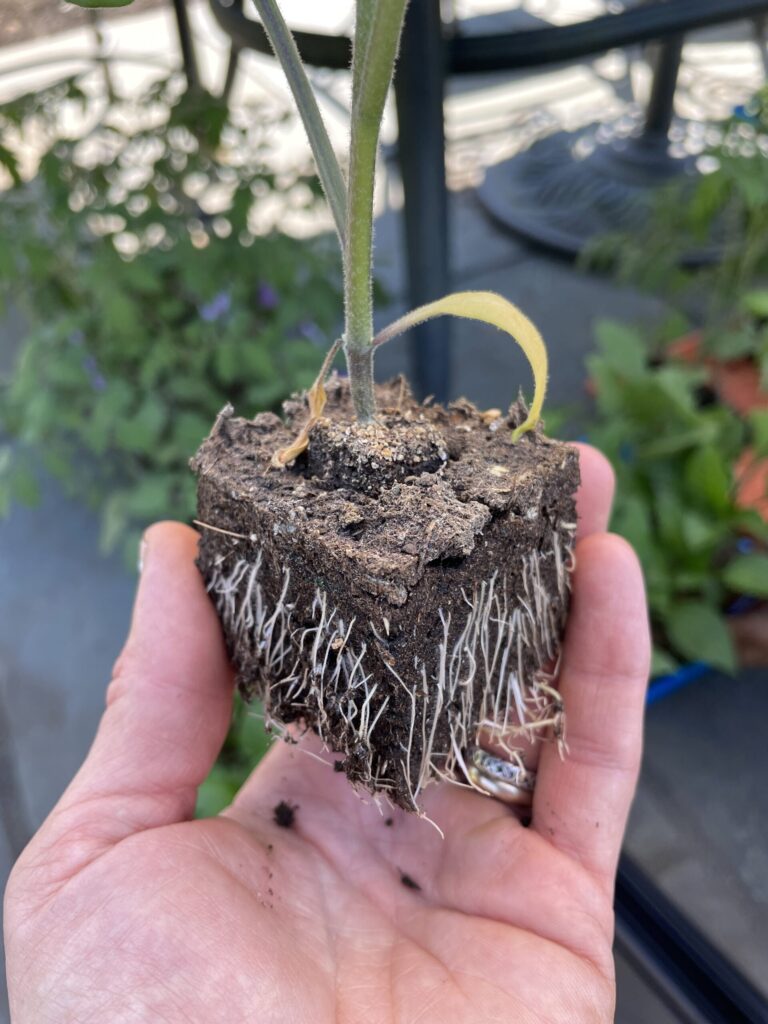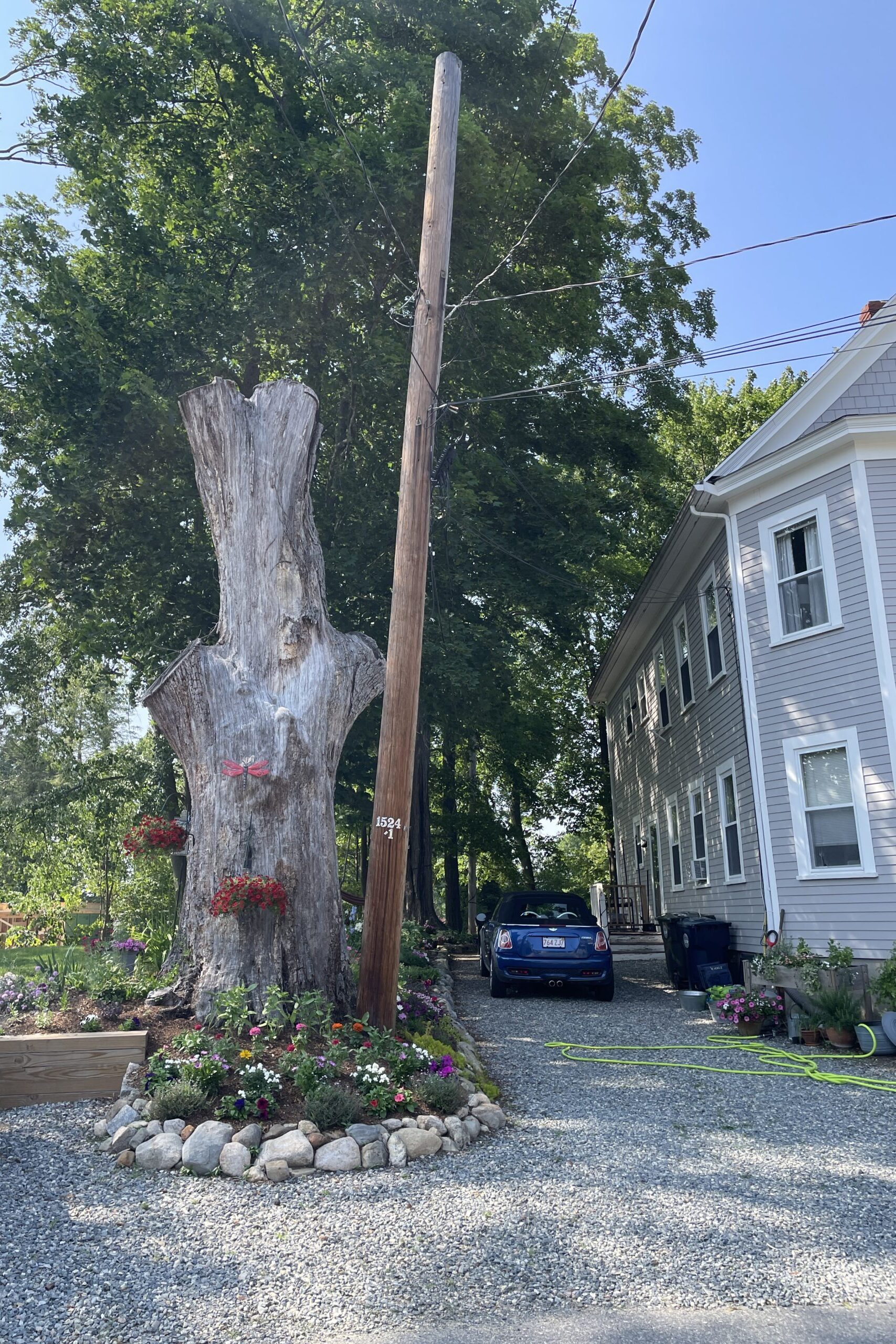Home / Site Design + Construction / Landscape Management + Maintenance
Highlights
Why Do This Step?
Landscapes are the only element of the built environment that offer the opportunity to sequester additional carbon over time, allowing a project to become net-zero carbon or carbon-positive. This opportunity hinges on methods used to manage the landscape.
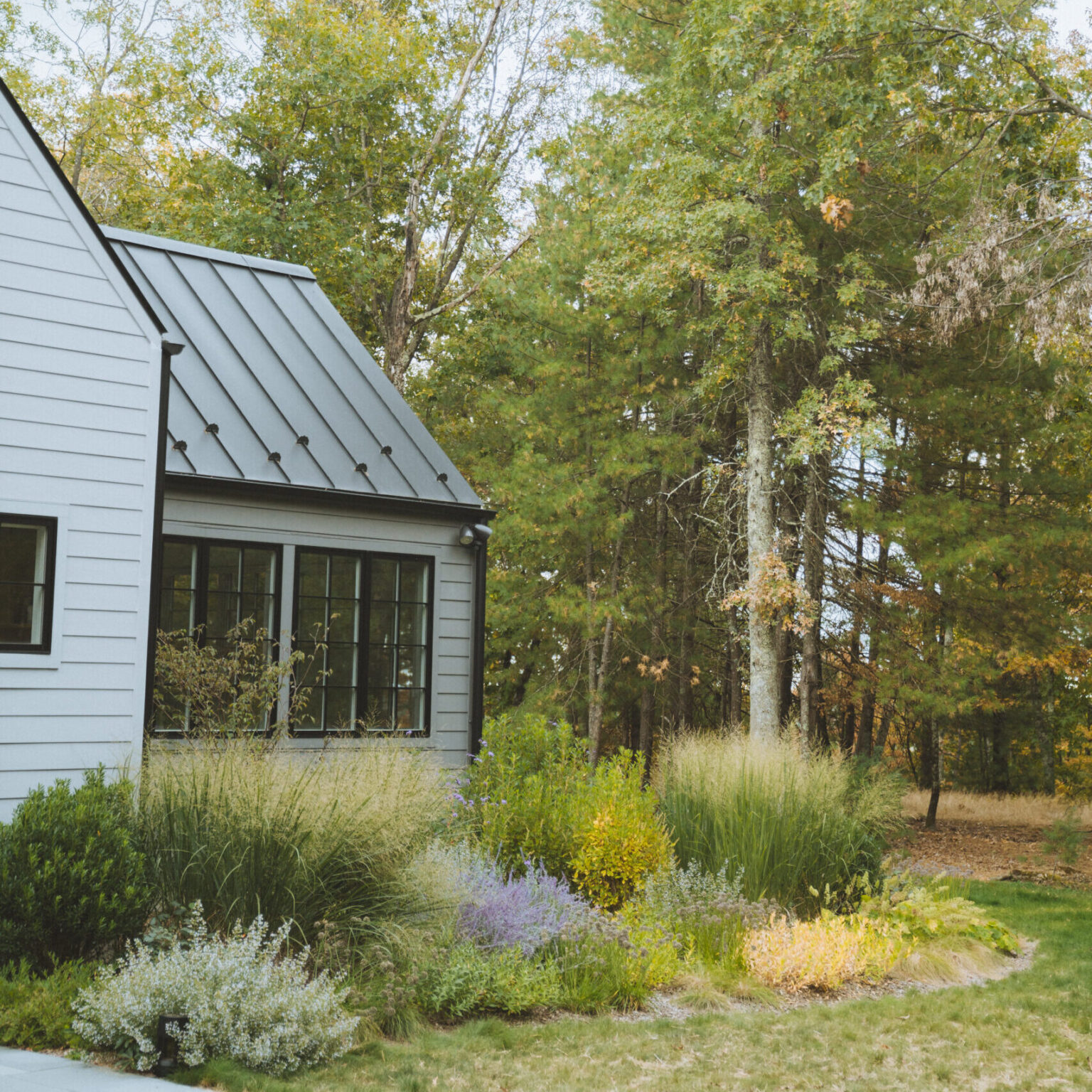
Managing Landscapes for Healthy Soils
Ornamental, recreational, and developed landscapes cover over 900,000 acres of land in Massachusetts, approximately 21% of the state; however, these soils are estimated to hold only 8% of the state’s SOC stocks (HSAP 2023). These soils are a prime target for improvement. SOC stocks in these mainly urban and suburban contexts could be increased not only through better soil management during construction projects, but also with a shift in landscape maintenance practices in general.
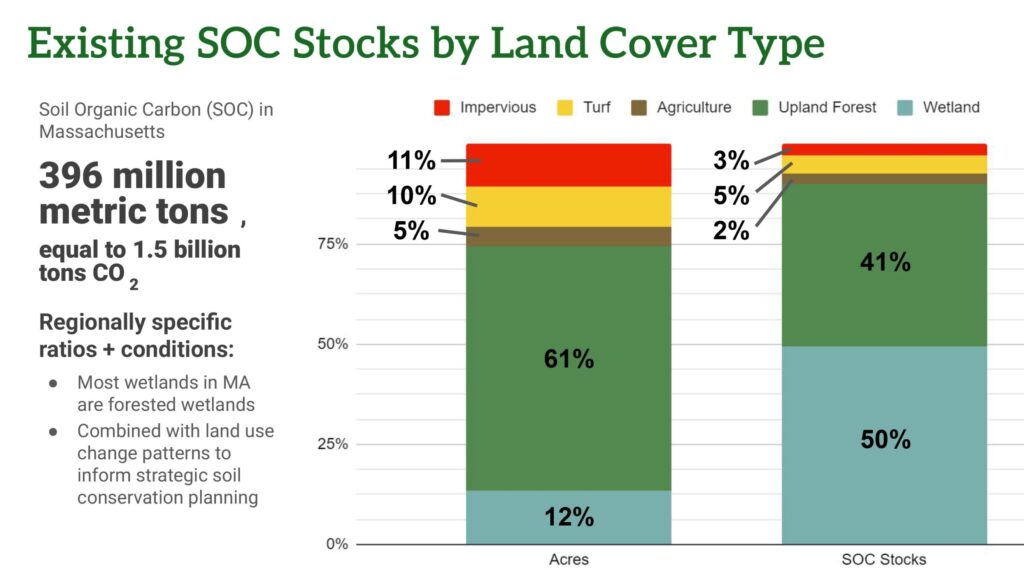
Operations and Maintenance Plan
As the guiding document for the ongoing management of a landscape, an Operations and Maintenance (O&M) Plan should lay out strategies for ongoing management that support healthy soil function in addition to aesthetics. The recommended actions may vary widely, or be in conflict with each other, depending on which function is prioritized: landscapes utilizing engineered structural soils will need maintenance to prevent the buildup of organic material that may impact the drainage properties of the soil, whereas the management for wooded areas should encourage the buildup of organic materials to increase soil carbon sequestration.
Some certifications require Operations and Maintenance plans to be submitted for approval. Conservation Commissions may require them to close out environmental permitting, and other private regulatory or governing bodies, like condo associations, may use them to guide or enforce standards in landscaping.
An Operations and Maintenance Plan can be an effective vehicle for increasing Healthy Soil best management practices on private land. It may be developed as a means of building consensus around the intentions and implication of landscaping management, as well as a tool for holding employees or landscape contractors accountable.
While a management plan should be tailored to the unique landscape type and site characteristics, the four Healthy Soil Management Strategies can be applied to generate general land management recommendations:
- Protect sensitive and valuable soils and vegetation from disturbance:
- Keep soils covered post-construction to protect from erosion and drying out, using
- Mulching with wood chips, slash, leaf litter
- Biodegradable netting
- Cover cropping, early successional native plantings
- Establishing ground cover instead of relying on ongoing mulching for weed suppression and soil covering
- Rehabilitate soils for better ecological function:
- Design soil profiles for the desired soil functions. First identify the desired soil functions for each site, then determine what soil characteristics (i.e. bulk density, nutrient levels, acidity, etc.) are necessary for that function.
- Schedule regular soil testing and observation to monitor the ability of the soil on site to support desired functions.
- Create an amendment plan:
- Amend for the specific vegetation planned. Most extension laboratory recommendations are based on desired agricultural yields, not soil health or native vegetation.
- Amendments have varying life-spans and some will need reapplication on an annual basis.
- Create a plan to recycle nutrients onsite:
- Hold organic matter and maximize soil carbon sequestration by establishing onsite management systems for as much of the leaves, brush, woodchips, and weeds as possible.
- Relocate plants and soils that will be disturbed by construction using best management practices.
- Plan ahead of construction and disturbance to identify locations for plants and soils to be transplanted on site.
- Recreate soils using locally sourced offsite mixes and amendments to add to, alter, or replace removed or compromised soils. Restore soil horizons with different blends to reflect natural soil types of reference ecosystems. Include blending layers to avoid perched water tables.
Operations and Maintenance Plans are an excellent avenue to encourage the decarbonization of land management. Reducing fossil fuel use while increasing the carbon sequestration potential of soils onsite will significantly increase the overall impact of these efforts. Transitioning to electrified lawn and garden care equipment, sourcing local amendments and plants, and establishing onsite composting locations for organic waste management are all ways to decarbonize the necessary work of managing landscapes.
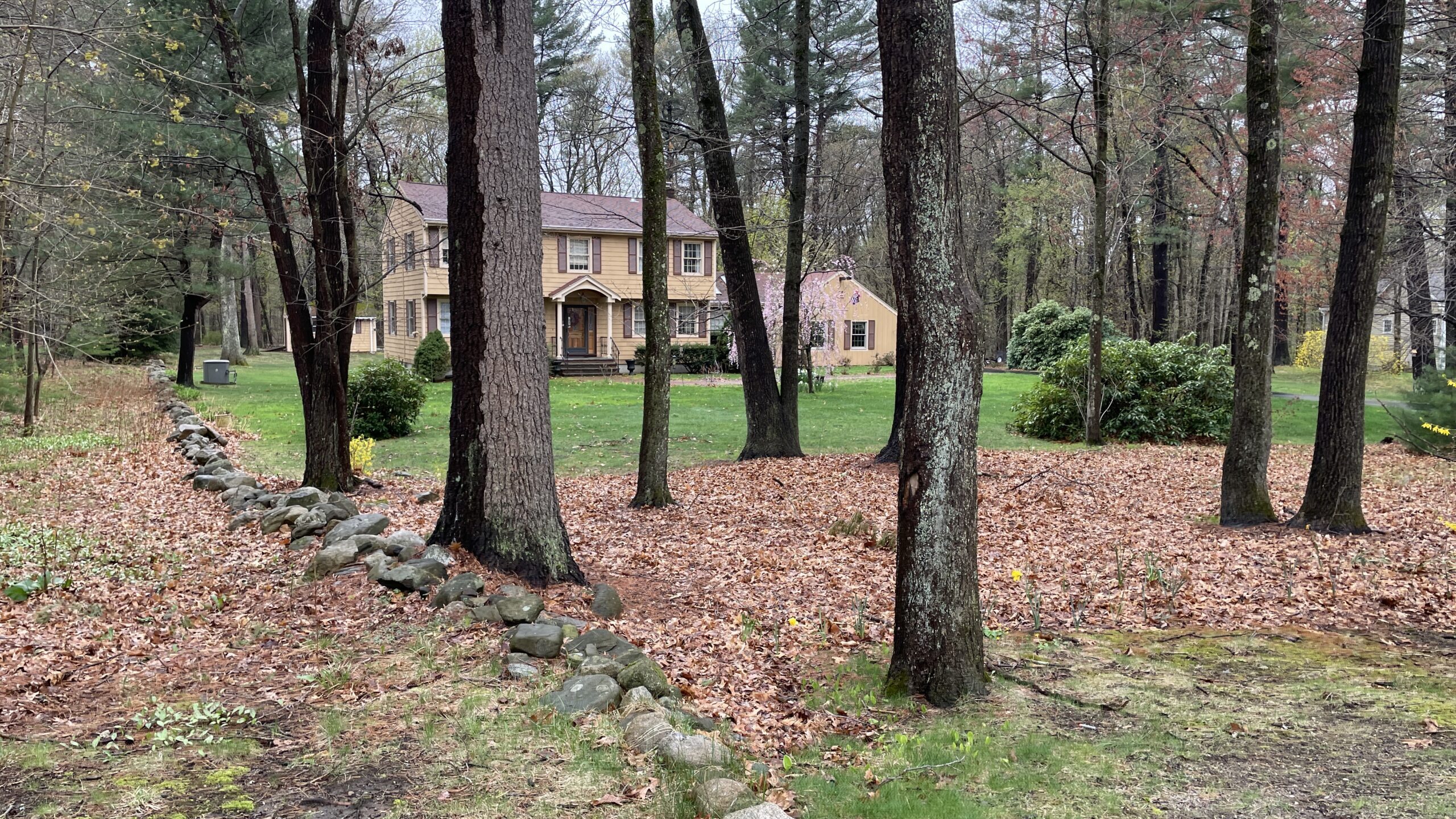
Lawn
A well-established lawn can have significant soil health benefits, including water filtration and infiltration, erosion control, and carbon sequestration and storage. However, when the lawn is mowed frequently, grass clippings removed, and fast-release nitrogen fertilizers applied, the accumulation of organic matter and soil health will be severely limited. To maximize the SOC capabilities of the lawn, soils should have a minimum of 3% soil organic matter. If 25% of current open lawn in Massachusetts were planted with trees and raised to a minimum of 3% organic matter in the top 8 inches, the equivalent of an additional ~180,000 tons of carbon dioxide per year could be sequestered in these landscapes (HSAP 2023, based on 2016 landcover data).
To maintain healthy lawn soil:
- Raise the mower height to a minimum of 2.5”.
- Schedule regular mowing for, at most, every other week to reduce compaction, improve the recovery time for roots, and reduce fuel consumption.
- Test the soil annually, and fertilize with organics only as and where needed.
- Use the mulch setting on the mower and leave the grass clippings in place.
- In the fall, use the mulch setting on a mower to shred fallen leaves in place rather than removing them to another location. When possible, leave leaves intact under tree canopies (Ferlauto et al., 2024).
- Diversify lawns with trees, shrubs, and low broadleaf flowering forbs that hold up to mowing.
- Aerate in the fall and overseed if needed.
- Electrify all maintenance to reduce fuel consumption, noise, and air pollution.
- When repairing or replacing lawn, leave topsoil onsite + amend whenever possible.
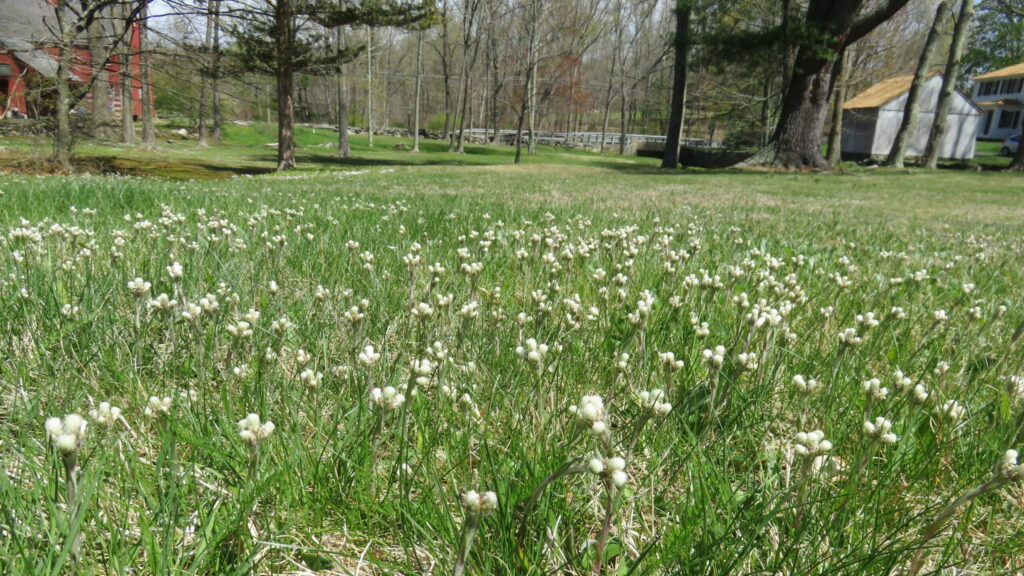
Gardens
A healthy garden should support its intended vegetation with minimal additional annual inputs. Well-managed perennial gardens should have, on average, higher rates of carbon sequestration and more diverse soil biology than turf; however, when they rely on regular rapid-release fertilizers and mulch applications, they will never reach their full potential. To maximize the SOC capabilities of gardens, plants should be appropriately selected for the soil type and climate (avoiding irrigation if possible), and groundcovers should be established rather than relying on seasonal applications of mulch for weed suppression.
Adopting Healthy Soil Management practices for gardens requires a nuanced understanding of the site and basic horticultural skills, including familiarity with plant identification. Many of these practices can also reduce the time needed for the maintenance of a garden in the long-term, however, keeping a groundcover layer free of weeds requires different skills and knowledge than spreading mulch, especially during the initial establishment period.
Perennial Gardens
- Embrace dense perennial plantings with a mix of shrubs, trees, and understory plants. More plants and root systems means more carbon can be sequestered and stored.
- Keep bare soil covered, ideally with plants. Consider using a frost-kill cover crop like peas or oats to fill in around young plants during the first seasons of a new garden.
- Know the reproductive strategies for planted vegetation. If there are desired self-seeding annuals or short-lived perennials, identify and protect selected volunteer seedlings to ensure successive generations and soil cover.
- Clip annual weeds at the base rather than pulling them to reduce soil disturbance.
- Plant smaller specimens, such as plugs, to reduce the transportation costs, plastic, and soil disturbance. Generally, younger plants are more resilient and may have a higher success rate, especially for perennials.
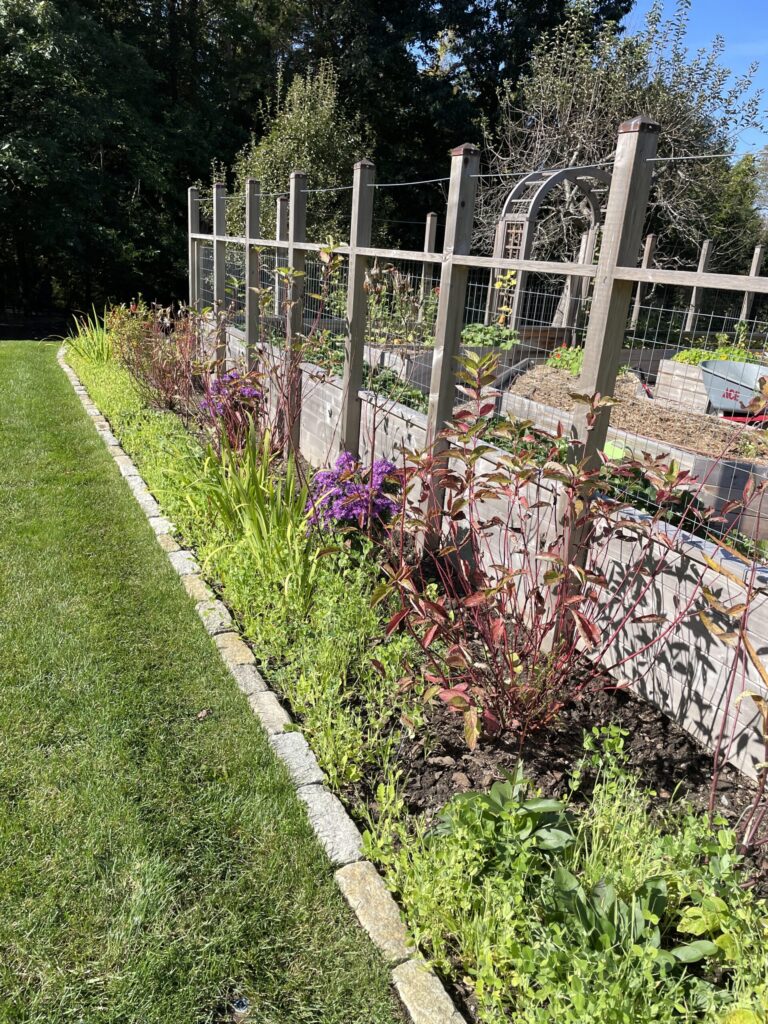
Annual/Vegetable Gardens
- Practice no-till gardening. Avoid rototilling or turning the soil over annually. Use mulch and cover crops to keep the soil covered.
- Rotate crops to minimize soil disturbance. Follow root crops like potatoes with crops that are directly seeded like salad greens to take advantage of the necessary disturbance that is part of the harvest.
- Grow transplants wherever possible to avoid needing to turn the soil over for a seedbed. Alternatively, seeding in a small place and then transplanting seedlings out can reduce annual tillage.
- Make soil blocks for transplants rather than using plastic seeding trays. Soil blocks are formed by pressing a mixture of potting soil and compost in a mold. Seedling roots will naturally air prune when they grow large enough, rather than becoming rootbound, increasing their resiliency and reducing transplant shock.
- Compost all the garden waste to recycle the nutrients back into the soil. Where possible, compost in place to reduce maintenance costs and save on transportation.
Rain Gardens + Green Infrastructure
- Every rain garden or element of green infrastructure will have its own unique management needs based on the function of the basin, expected inflow, and location.
- Because these gardens are designed to capture excess nutrients from stormwater, they should require little or no additional amendments after establishment.
- Contrary to ornamental or productive gardens, it may be necessary to remove leaves and waste organic materials rather than allowing them to compost in place in order to preserve the infiltration and filtration capacity of the garden.
Meadows + Shrublands
In New England, meadows require a significantly different management regime than traditional ornamental landscaping. Meadow species are generally adapted to more acidic soils, have low nutrient needs, and are drought-tolerant. In many cases, adding too much organic matter, rapid-release nutrients, and irrigation to meadows and native shrublands will have detrimental effects on the final planting, increasing weed pressure and competition from invasive species.
Unlike traditional perennial gardens or shrub plantings, the visible species composition of meadows may shift drastically from one year to the next. Established wildflower meadows may become grass-dominated over time, as thatch builds up and prevents reseeding of the annual flowers. Many meadow species are very sensitive to seasonal climate shifts. The midsummer appearance of a meadow will be significantly different depending on whether it was preceded by a wet, cold spring or a hot dry spring.
To maintain healthy meadow soils:
- Mow meadows once a year or every other year, unless intervention is required to manage an undesired species. To control overly aggressive or undesired species that self-seed, mow selectively before the plant has produced viable seed.
- Ideally, mow in late winter when the ground is still frozen to avoid compaction.
- Maintain a high enough diversity of plants to allow the adaptation to annual changes in weather conditions. This can be accomplished with a mix of root types and reproduction strategies: self seeders with shallow surface roots will quickly establish and fill in gaps in moist years; tap-root plants will be more drought tolerant.
- Do not irrigate or fertilize meadows after establishment. If appropriate species are selected for the site they will adapt to annual variations in the climate.
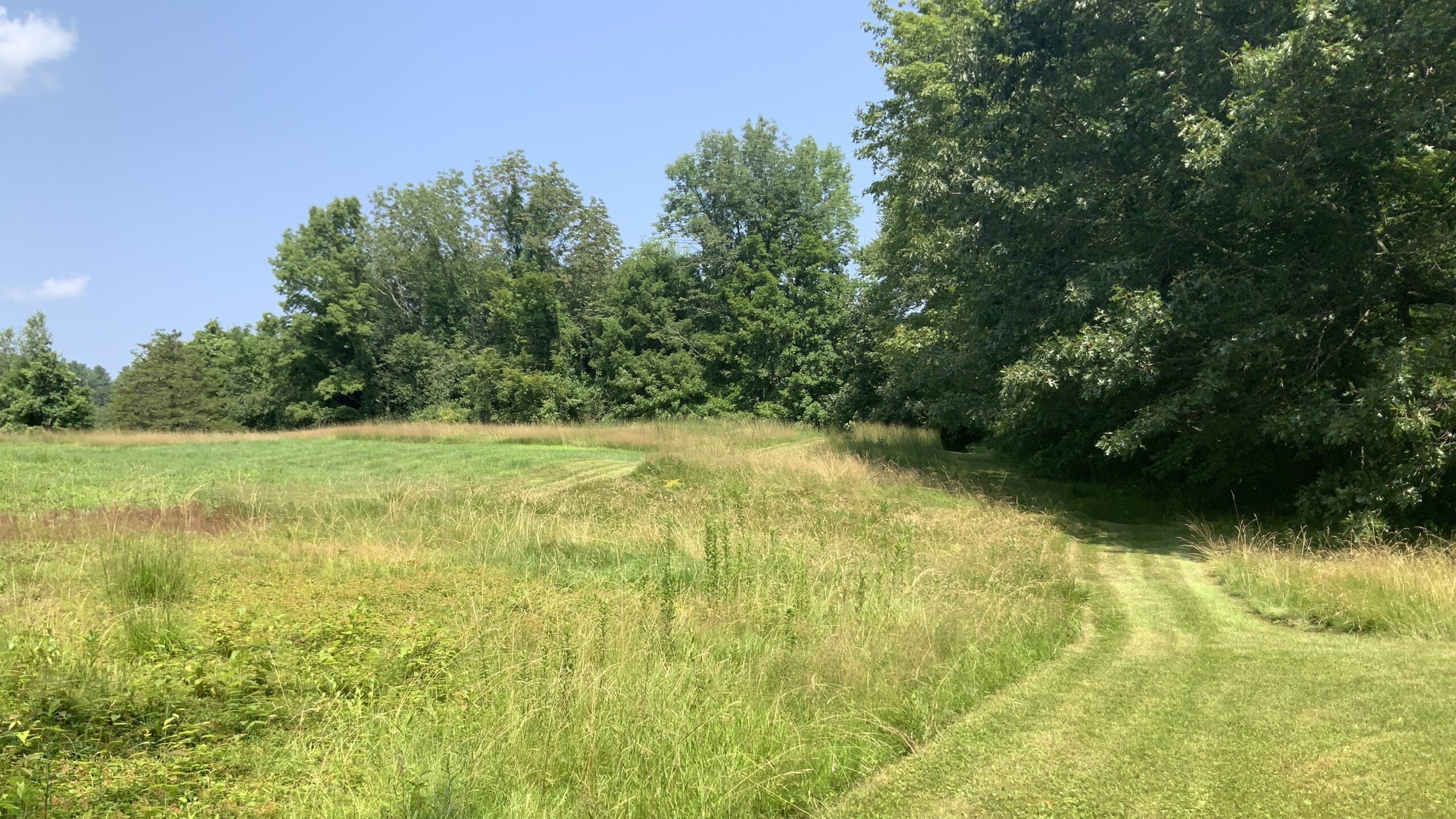
Woodlands + Forests
After wetlands, woodlands and forests store and sequester the largest amounts of soil organic carbon. The carbon in these soils can continue accumulating for centuries if left undisturbed. Younger fast-growing trees capture carbon quickly, while older, mature trees store a larger overall amount of carbon. Eventually, woodlands will reach a point where they no longer accumulate more carbon, entering a “steady state” where carbon gained from photosynthesis equals carbon lost through respiration. Because it can take decades for most trees to reach this state, mature trees and established woodlands should be prioritized for protection.
To maintain healthy woodland and forested soils:
- Maintenance vehicles should stay out of the inner 25% critical root zone (CRZ) of all mature trees.
- When adding ornamentals to the edge of a forest, avoid compacting and damaging the roots of mature trees by planting bare-root or smaller burlaped nursery trees that can be brought by hand-truck rather than vehicle. This will also reduce the hole size, root damage, and soil disturbance during installation.
- Leave downed branches and leaves in place wherever possible.
- Use fallen leaves from on site to mulch the edges where undergrowth is not desired.
- If there are mature trees along the edges that are damaged or pose a threat to buildings or inhabited spaces, cut and leave a standing snag—minimum of 15’ of the main trunk—to slowly decay over time.
Resources + Tools
Case Studies
- Osage Park (Bentonville, AR) | Landscape Architecture Magazine
- Sustainable Landscape Plan | Purdue University 2012 [PDF]
- Sustainable Landscape Maintenance Manual | Chesapeake Bay Watershed [PDF]
Credentialing Programs
Applications + Tools
Healthy Soils Management Resources
References
Ferlauto, M., Schmitt, L., & Burghardt, K. (2024). Legacy effects of long-term autumn leaf litter removal slow decomposition rates and reduce soil carbon in suburban yards. PLANTS, PEOPLE, PLANET, 6(4), 875–884. https://doi.org/10.1002/ppp3.10499
Qian, Y., & Follett, R. F. (2002). Assessing Soil Carbon Sequestration in Turfgrass Systems Using Long-Term Soil Testing Data. Agronomy Journal, 94(4), 930–935. https://doi.org/10.2134/agronj2002.9300
Selhorst, A., & Lal, R. (2012). Net Carbon Sequestration Potential and Emissions in Home Lawn Turfgrasses of the United States. Environmental Management, 51(1), 198–208. https://doi.org/10.1007/s00267-012-9967-6
Zirkle, G., Lal, R., & Augustin, B. (2011). Modeling Carbon Sequestration in Home Lawns. HortScience, 46(5), 808–814. https://doi.org/10.21273/hortsci.46.5.80
